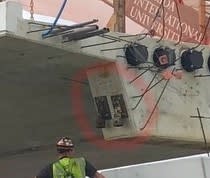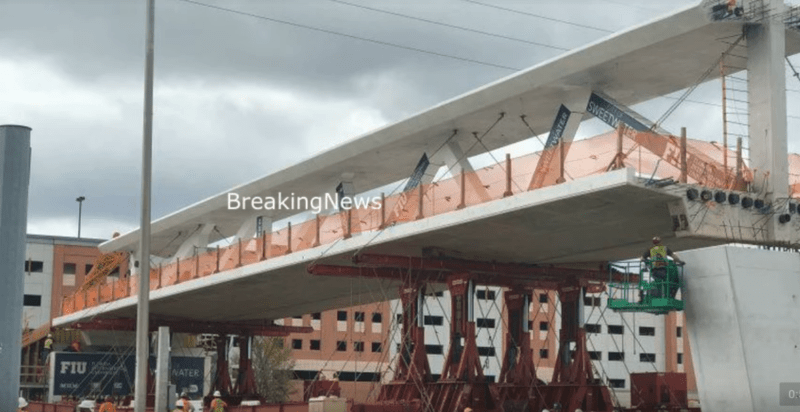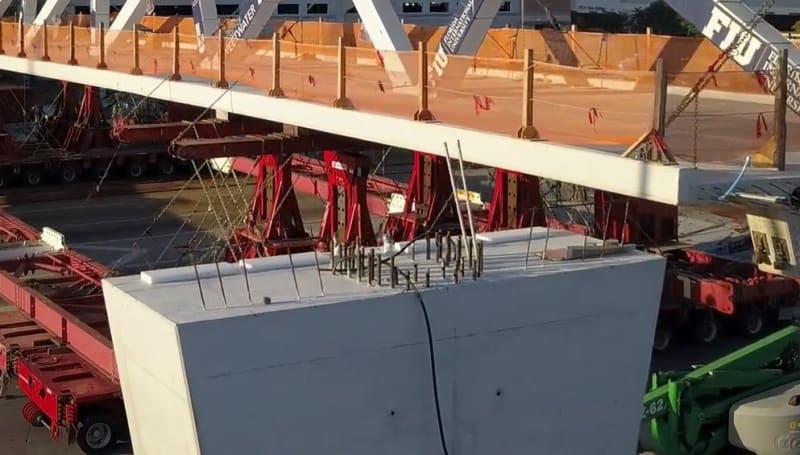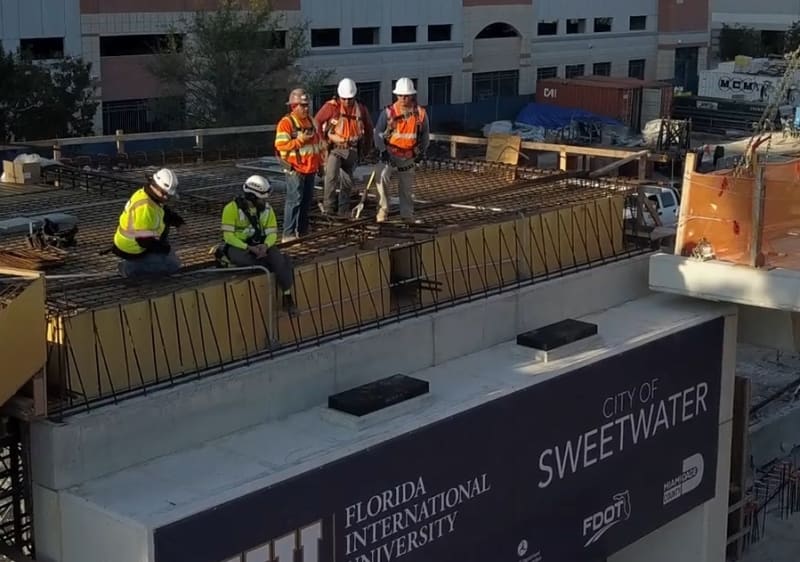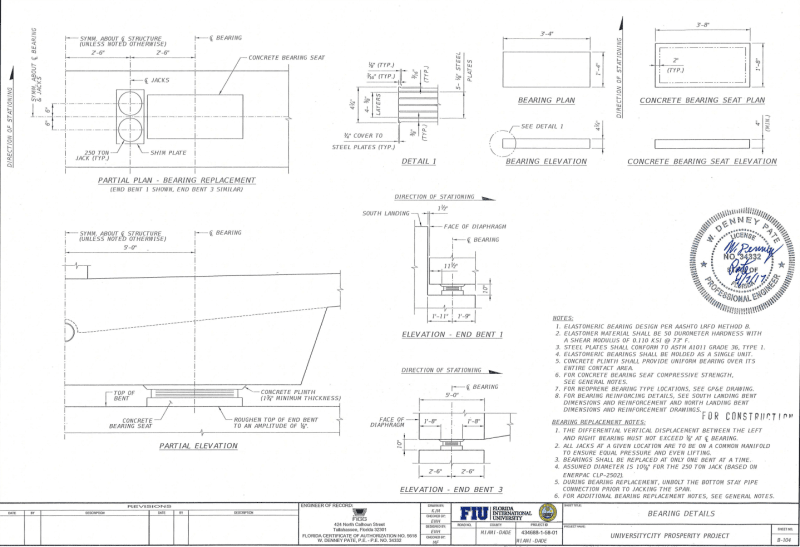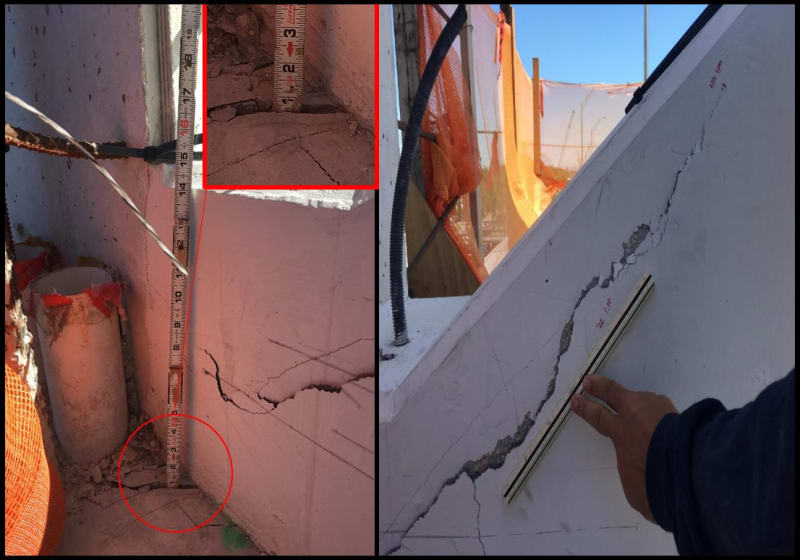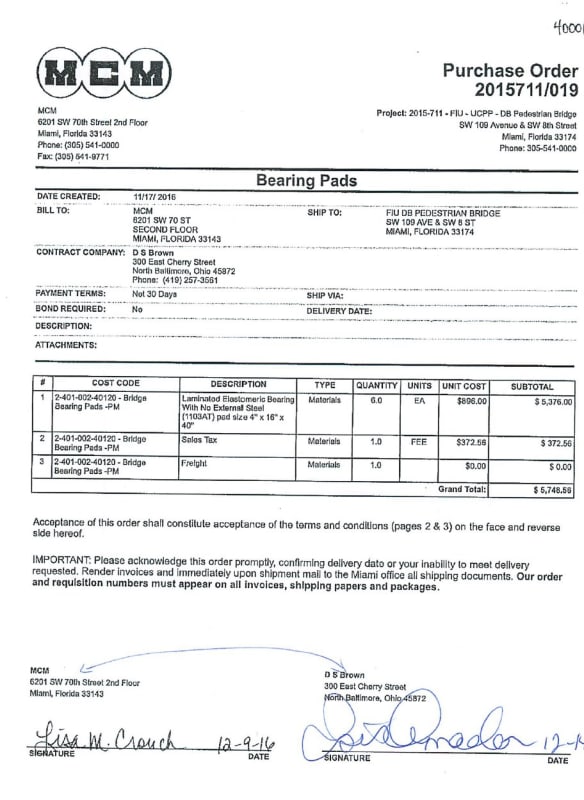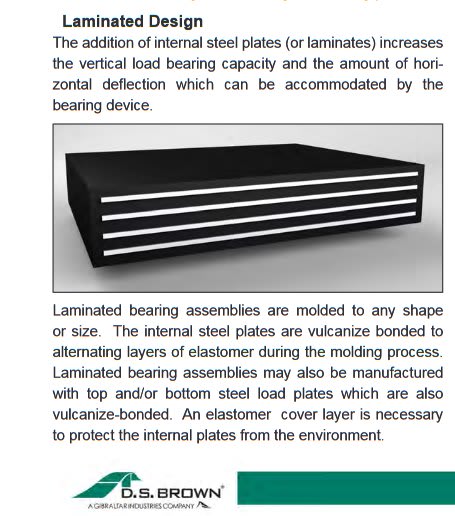jrs_87(Mechanical)24 Jun 19 01:42 said:
For those interested about chains used in move. I found documents that instructed movers to tighten chains before horizontal motion and slacken them before lifting and lowering structure.
I started working on a clearer explanation of the chains a couple of days ago, and I will use your comment as a convient starting point.
OVERVIEW: From what I can piece together from several videos:
[ul]
[li]The spiderweb of tower-to-base chains were tightened at the casting yard and never loosened until the bridge was just west of the piers.[/li]
[li]Before the bridge was moved over the piers the tower-to-base chains were removed, the bridge raised and leveled, and the chains reattached.[/li]
[li]The chains remained in place until the bridge was squared up in the E-W and N-S directions over the piers, ready to drop into place.[/li]
[/ul]
DETAILS:
There appear to be 3 separate chain groups, each with a different purpose:
[ol 1]
[li]Both canopy ends are chained to the deck curbs to prevent the canopy from rocking side-to-side. (my assumption)[/li]
[li]The canopy above each SPMT group is chained to the arms of the SPMT towers to hold the bridge against cribbing on top of the towers. (my assumption)[/li]
[li]The largest group of chains connect the SPMT tower tops to the mover bases and spreader bars. My guess is that these chains act as a stop so the SPMT towers can be raised until all the slack is out of the chains, causing each tower to become a rigid extension of its base.[/li]
[/ol]
The group 3 chains remained tight during the move. As the
SPMTs traverse the road median at the 00:59 mark of the
Move Part 2 - ground view video you can see each wheel raise and lower as is passes over the median, but the tower chains are never relaxed.
When the bridge is moved into position just west of the piers, several incremental adjustments are made, as shown in the
Move part 3 - SW view video. Open the video in a separate window so you can follow along:
[ul]
[li]00:10 - Starting at the north end, jacks on the wheel trucks of the SPMT bases are individually lowered and raised to adjust the east-west and north-south tilt of the bridge. The presence of these jacks is my assumption, but some mechanism is clearly elevating the SPMT bases at ground level.[/li]
[li]00:20 - The group 3 chains are removed.[/li]
[li]00:25 - The SPMT towers are raised so the bridge will clear the piers, and to level the bridge north-south.[/li]
[li]00:41 - The group 3 chains are reattached.[/li]
[li]00:56 - The bridge is moved over the piers.[/li]
[/ul]
Once the bridge is over the piers, more adjustments are made, as shown in the
Move Part 3 - ground view east 2 video:
[ul]
[li]00:39 - The SPMT wheel trucks are used to turn the bridge, and crab it sideways.[/li]
[li]01:31 - The SPMT Towers are lowered slightly, causing slack in the group 3 chains. As far as I can tell, the bridge wasn't completely lowered onto the piers during this phase, because the group 2 chains would collapse the canopy if weight is taken off the SPMT cribbing.[/li]
[li]01:35 - The SPMT towers are used to make final tilt adjustments.[/li]
[/ul]
Before the bridge is lowered onto the piers, workers remove the Group 1&2 chains, as shown at the 16:47 mark of the
Move Part 3 - SE view video.
The chain removal, final positioning, and SPMT withdrawal can be watched starting at the 01:22 mark of the
Move Part 3 - SW view video.

